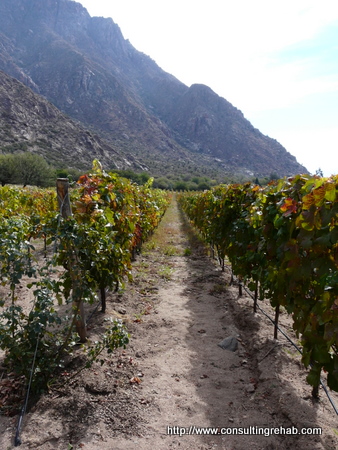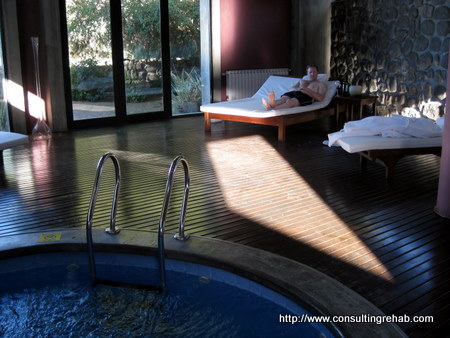Well, we’re back in Buenos Aires after a week in the Northwest of Argentina (Salta and Jujuy provinces). Jen is working on a post that will give a full overview of our trip with pictures and so forth, so we should get that up in the next day or so. In the mean time, my priority has been writing a strongly worded post for Trip Advisor regarding the unpleasant experience we had with a guide named Angie that we contracted with in Salta in an effort to help save others from going through what we went through.
To keep you up to date on what we’ve been up to and to provide you with a strong warning in the event that you find yourself planning a trip to Salta you should definitely check out the post along with whatever responses may come from it here at Trip Advisor. Below is my original post if you’d rather read it here:
——————
Title: Different point of view on popular Salta Guide
My wife and I just spent a week in Salta/Jujuy during which we used Angie’s (also known as Giena on Trip Advisor) services as a private guide for the first 3 days. We were extremely disappointed with the quality of her service, her incredible prices and her attitude towards customer service in general. I recognize that she is quite popular here on TA and receives volumes of positive feedback (which is how we found her to begin with), but after our experience with her, I have trouble understanding all of the praise and think it’s very important that TA has a post representing an alternative viewpoint so that other people have a more balanced idea of what Angie offers–had there been a post like this, we would likely have planned differently and had a much better trip. For context, we’re from the US and have been living in BsAs for the last 2.5 months; in that time we’ve developed a good understanding of pricing/cost of living in BsAs (this will be important when I discuss Angie’s pricing).
We hired Angie because of the great things we had read on TA. Unfortunately, due to a series of vague emails, we misunderstood her pricing to be US$250 for 5 days, when in reality it was US$250 PER DAY. We take partial responsibility for not having reconfirmed the total price, but after re-reading the email chain several times, there is definitely room for misinterpretation – Angie never stated it was a per day price nor did she provide a total price for the trip. Further, given our reference points for pricing in BsAs, it would never have ocurred to us that she could possibly charge US$250/day–I’ll get into that more in a bit. Had Angie not handled the misunderstanding so poorly, I would not be taking the time to write this detailed post–as it is, she left us feeling cheated and extremely unhappy.
In the end, we paid her US$500, which we feel was far more than she was worth. What did we get for our US$500? Here is what Angie did for us:
Day 1: 10am-3pm =~5 hours of time together including lunch (~3.5 hours of driving)
Angie picked us up at 10am and drove us to Cafayate with a couple of photo stops at well marked locations right along the side of the main road (e.g., Garganta del Diablo). We arrived in Cafayate at ~1pm and had lunch with Angie at her favorite restaurant in town. Then she dropped us off at our hotel at 3pm or so, and we didn’t see her again until the next morning.
Day 2: 10am-12pm ~2 hours of time together
We weren’t planning to see Angie on Day 2 (assuming that we weren’t paying for her) as we had told her we were planning to explore Cafayate by ourselves, but she told us she’d pick us up at 10am and take us to a couple of wineries so we reluctantly agreed.
She picked us up at 10am, took us to the goat cheese farm and then 2 wineries (each obvious tourist destinations). At each of these 3 venues she handed us off for the standard tour and waited until we were done. My wife had talked to her 2 days previously about setting up a lunch at the last winery and assumed this had been arranged. However, on the way there Angie pulled off the road, called the winery and then told us we couldn’t have lunch there because we didn’t book it the day before (I guess that was our job?). After the 2nd winery she dropped us off in town at ~12:00pm. The only other time we saw her that day was when she picked us up at our hotel and dropped us off at a restaurant for dinner (~10 min).
Day 3: 10am-2:00pm ~4 hours of time together (all driving)
She picked us up at 10am and we drove directly back to Salta on the same road we came down on with 2 stops at different photo spots. At this point, we still didn’t have a hotel booked for Friday night, and rather than helping us book something she just told us to let her know if we had trouble finding something. When we got back to Salta and she asked us for some money in advance is when we first realized that there was a significant misunderstanding over her pricing and that it was actually 4x higher than we had thought. US$250 per day was way beyond what we wanted to pay, so after talking it over that afternoon we told her that we could no longer work with her.
In summary, Angie spent maybe 11-12 hours with us over 3 days, primarily as a very highly paid taxi driver. She booked only one hotel for us (which was mediocre), she recommended a few restaurants in Salta (which were not particularly good and literally had large tour buses waiting out front as their tour groups dined there) and a couple of restaurants in Cafayate–one of which was good (though easily findable on the main square), the other was not. And for that, she demanded that we pay her US$500 despite the mixup what was at least partly her fault (according to her this was a great deal and we were ‘ridiculous’ to have thought she charged less); she had wanted US$1000 for 5 “days” (and yes, 2-4 hours of driving counts as a day according to her). Keep in mind, these prices do not include food, hotels or any activities for you and that Angie told us several times that she never has to pay in restaurants or hotels when on tours, so I’d think her only real cost is her car and fuel.
Also, despite other posters with very positive comments about learning about the history of the region and other local-type info from Angie, we did not have this experience with her at all–her favorite topic of conversation was how much better off we would be if we switched to her preferred hotel in Cafayate (this awkwardly came up at least 6 times, leading us to wonder why it was so important to her). In general, we do not feel that we saw, heard, did, or learned anything in our time with Angie that we couldn’t have easily experienced on our own. We ultimately paid her what she demanded; we probably shouldn’t have.
Aside from the mixup we had, we genuinely feel that US$250/day is an outrageous price for these services, even if they were great. After living in Buenos Aires for 2.5 months, here is some context on what you can get for US$1000 in the capital (which should be significantly more expensive than the provinces):
-1 month rent in a nicely furnished apartment in Recoleta or Palermo with all utilities included plus weekly maid service (we pay $1200/month for a massive and luxurious place)
-15+ fantastic dinners for 2 at the very nicest restaurants in BsAs with great wine/steak/etc.
-6 weeks of 20 hours/week Spanish school at one of the best schools (or ~70 hours of private instruction from a highly qualified teacher)
-1500+ empanadas (seriously)
-80 bottles of very good Argentine wine purchased in Salta (or 150 bottles of the exact same wine if you buy it in BsAs–Salta is much more expensive even for the local wines, not sure why)
-For AR$600 = ~US$155 for the 2 of us, we spent a full day (9am-7pm) in Tigre with 2 wonderful guides that spoke perfect English, gave us lunch, took us kayaking for 3.5 hours way off the beaten path and then served us an incredible asado with 4+ courses of meats. It was an all-day event, we saw and did things we couldn’t have possibly done on our own, we learned tons of things about Argentine culture and the Tigre Delta, it came with great food and it was reasonably priced. Again, BsAs/Tigre should be more expensive than Salta.
For some further context on how much an income of US$250/day is in Argentina, we’ve heard from many friends in BsAs that a high paying job in the capital (e.g., computer engineer) will pay ~AR$8000/month, which is ~US$100/day for 8+ hour days.
To be fair, I don’t know if Angie’s prices are especially high or if they are normal for private guides in Salta. Either way, for US$250 per day, I would expect MUCH, MUCH more for my money, so my first recommendation would be to do it without a guide as visiting the NW is really quite straight-forward (e.g., pretty much everything is on the main road and well marked). If for some reason you feel like you’d like to have a guide, I would shop around and be very explicit about what your expectations are (e.g., I want to see things off the beaten path and experience things beyond what the tour buses do, etc.). If your highly-paid private guide is taking you to the same places the large tour buses go, you’re better off without them.
For the last 2 days of our trip, we rented a nice car from a company with fluent English speakers (Alamo), saw everything that we would have seen otherwise, enjoyed the freedom of exploring on our own, and spent far less than half of what it would have cost to continue with Angie. This took less than 2 hours of planning/setup and could have been done even more cheaply with some advance planning.
Sorry to be so negative, wish things hadn’t gone this way. Obviously many other people have enjoyed their experiences with Angie, so possibly this is a one-off, but I think an important data point for people to consider in planning their trips. Let me know if you have questions either through the forum or through PM and I’ll be happy to provide more detail.
Ryan

























